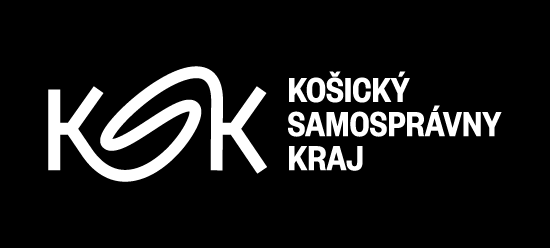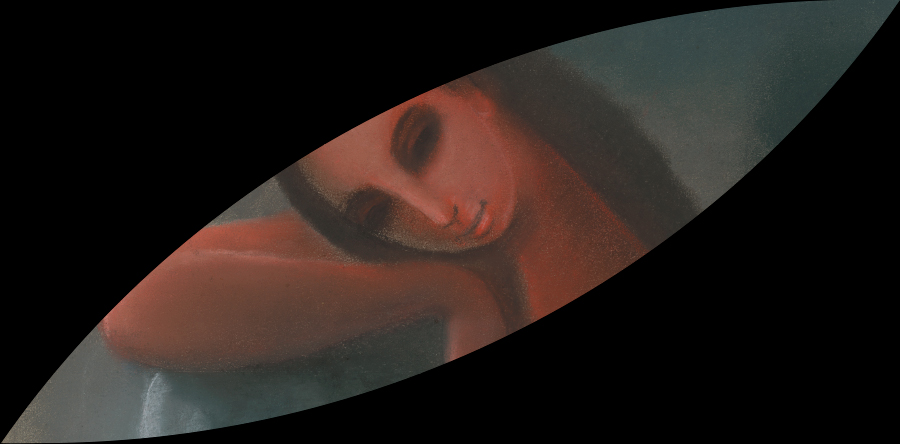Opening: April 15th 2025, 6:00 p.m.
Curators: Zuzana Janečková, Dorota Kenderová
Exhibition duration: 16. 4. 2025 – 24. 8. 2025
Space C, Hlavná 27, Košice
A painter with an unmistakable style. Girl, lover, wife, mother, older woman. Beautiful, celebrated, elegant, learned. Elusive, like a dream that seems to slip away as we awake, with only fragmentary scenes lingering in our memory. Her work poses questions, kindles the imagination. She is purposefully minimalistic, visually subdued, yet also chilling and dark.
The exhibition of paintings by Edita Spannerová titled Sleepless Night focuses exclusively on the gaze. It is not intended to offer a comprehensive overview of her work, neither a chronological account nor a list of her various references and inspirations drawn from the history of art. It seeks out the contemporary gaze. Enigmatic, provocative, empty, dark, melancholy, deep, exhausted, anonymous, even alien. It reflects upon one of the most striking features of the artist’s signature style – the recurring appearance of deep black pupilless eyes, a motif which has been either conspicuously overlooked or marginalised in critical studies to date. These eyes are immersed in a deep silence. The exhibition opens up this silence, this depth, this emptiness. It draws our attention to loneliness, repressed traumas, the passage of time, the never-ending demands of care and the biopolitics of sleep. It ruminates on the life of the artist, a woman who was just 20 years old when the Second World War broke out. She draws the viewer into an internal dialogue as soon as they enter the exhibition. We find ourselves within her as she hovers on the borderline between day and night, between sleep and sleeplessness, between dreams and reality. She distorts the space, staring out at it through her dark unfathomable eyes, a highly distinctive and instantly recognisable signature style which the artist adopted very early in her artistic career.
The title Sleepless Night is inspired by the 1959 painting of the same name which immediately evokes the sense of an endless sense of exhaustion. In the painting a young woman, a mother, sits at the bedside of her fevered child. She is clearly in need of a hug and some rest, but all she has is her armchair and rumpled red blanket. Every parent who has ever sat watching over their child, head nodding over and over with an exhaustion borne of fear and desperation, can empathize with this lonely and intimate state of near martyrdom. The image is iconic and speaks for itself. All that remains is the silence in which we can hear every breath in, every breath out. A silence and intimacy in which we ourselves can take a breath and acknowledge the transience and fragility of life. To concentrate on the details. The curtains which frame and partition the exhibition space reflect the insubstantial and permeable border between dreams and reality, the various stages of our lives or the clarity of our memories.
In addition to this dialogue with its principal artwork, the exhibition also invites the viewer into an imaginative game over the idea of the passage of time. Visitors are confronted with the gazes of women of various different ages. Faces shrouded in diaphanous veils, with an enigmatic smile, with a serious look, hidden behind masks, against a dramatic wooded backdrop, or appearing with symbolic items representing time’s inexorable progress. The human body appears as a landscape filled with surprises, resounding to its own biorhythm. Research suggests that sleepless nights can have an ambivalent effect on both body and mind – physical exhaustion can lead to a state of mental euphoria that allows us to survive extreme situations, yet it also offers us unexpected perspectives on reality. This paradoxical state of body and mind sheds light on the fascinating ability of the human organism to adapt to extreme situations.
curators: Zuzana Janečková, Dorota Kenderová
production and coordination: Valér Bakajsa, Michal Štofa
installation and adjustment of artworks: Peter Vrábeľ, Richard Tomory, Adriana Štetiarová
graphic design: Jozef Tušan
lettering: Jiří Teo Mateja
PR: Soňa Stano Jambrichová
gallery education and accompanying programs: Petra Filipiaková, Viera Ballasch Dandárová
We would like to thank the Slovak National Gallery, the Šariš Gallery in Prešov, the Orava Gallery and the private collector Jozef Pokorný for their generosity in lending their artworks for the exhibition.
* This exhibition is the first in a new dramaturgical series focusing on various traumas and their treatment. The series will explore the powerful stories of a selection of female artists.
Edita Spannerová (1919 - 1990) was born in Prešov and lived in both Košice and Bratislava.She studied in Budapest under Ferenc Helbing, Jenő Haranghy, Loránd Sárkány and Károly Koffán. During her life she had the opportunity to visit many countries which inspired her (including France, Hungary, Bulgaria, Russia, Turkey, Egypt, Italy and Spain). One of the first significant female artists of the postwar period, she was also a member of the Association of East Slovak Artists in Košice and the East Slovak cultural group Svojina.




